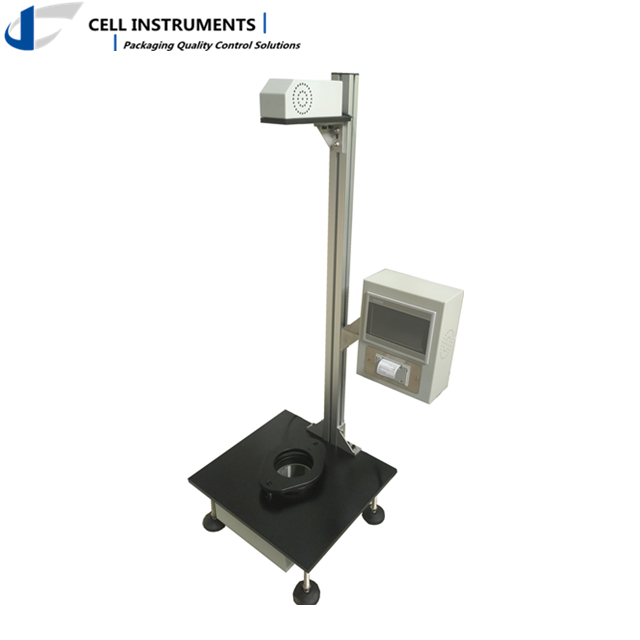Standards:
ASTM D1709
ISO 7765-1
JIS K7124-1
GB/T 9639.1

METHODS
Test method A specifies a dart with a 38±1mm diameter dropped from 0.66 m and the test range is 50~2000g.
Test method A specifies a dart with a 50±1mm diameter dropped from 1.5 m and the test range is 300~2000g.
PROCEDURE
Depending upon the expected impact strength of the test sample, either Method A or Method B is chosen. The method defines the dart size and the drop height for the dart. A number of test samples are then impacted to determine an appropriate starting point for the weight of the dart.
The test specimen is clamped securely in a pneumatic ring at the base of the drop tower. The mounting bracket is adjusted to the appropriate drop height, and the dart is inserted into the bracket. The dart is released to drop onto the center of the test specimen. The drop weight and the test result (pass / fail) are recorded.
The method to analyze this test data is called the “Bruceton Staircase” method. A series of 20 to 25 impacts are conducted. If a test specimen passes, the drop weight is increased by one unit. If a test specimen fails, the drop weight is decreased by one unit. The results from these impacts are used to calculate the Impact Failure Weight – the point at which 50% of the test specimens will fail under the impact.
FEATURES
1. PLC control and touch screen operation
2. Two tests methods of A and B (B optional)
3. Test results of both gram and Joule display
4. Electromagnetic suspension and automatic falling
5. Sample pneumatic clamping
6. Observation light for checking sample status when clamping
7. Manual and foot switch equipped for safe and easy operation
8. Dot matrix type micro-printer for data export
9. Professional software (optional)
PARAMETERS
Accuracy: 0.1g (0.1J)
Specimen Clamp: Pneumatic Clamp
Gas Supply :0.6 MPa Φ8 mm PU Tubing
Specimen Size :> 150 mm x 150 mm
Power Supply :AC 110~220V 50Hz
